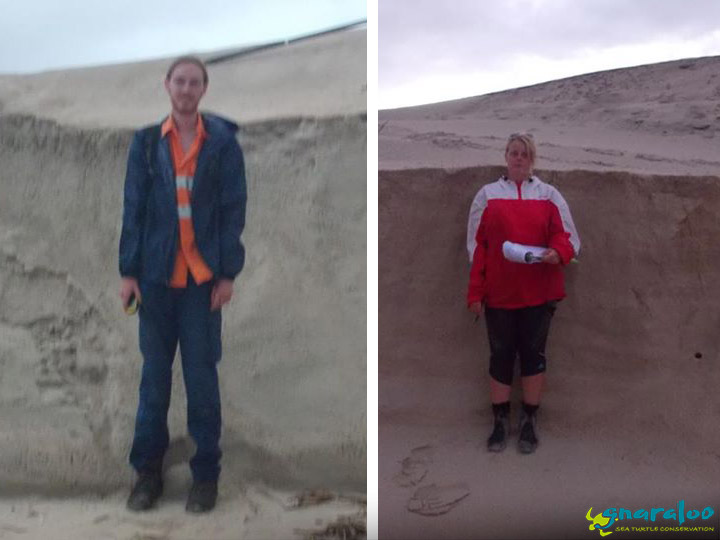Today, 28 February 2013, marked the windup of the Day Survey component of the Gnaraloo…

Impacts of cyclone Narelle on Gnaraloo Bay Rookery
Roughly a fortnight ago, Gnaraloo had a somewhat unwelcome visitor in the form of tropical cyclone Narelle bringing strong winds and heavy rain with her. After forming in the Indian Ocean on 7 January 2013 and strengthening to a tropical cyclone two days later, it looked like Gnaraloo was going to be in the thick of the cyclone’s predicted path. With wind gusts peaking at 100 knots (185 km/hour) on 10 January 2013, it looked like the Category 4 cyclone could do serious damage when it hit land. Food supplies and beverages were set aside by Gnaraloo staff, vehicles were placed under secure shelter and we all prepared to get cosy in Gnaraloo’s cyclone shelter, a sea container.
Luckily for us, the cyclone changed path and continued to stay out to sea as it headed south on the West Australian coastline. However, unfortunately the effects and impacts of the storm were still felt in the Gnaraloo Bay Rookery. Tidal storm surges caused massive damage, with the profile of some areas of the beach being totally changed. Large dunes became sheer embankments up to several metres high and once flat areas of sand were washed away, revealing the rocks that were present beneath. The embankments caused by the tides could be quite tall. I am roughly 190 cm tall and some embankments were even taller than this (refer to photo). Another photo shows Danica who is roughly 160 cm tall standing next to the embankment formed the sub sections BP7 and BP9. Many of the existing turtle nests were destroyed and lost, either by being washed away with the dune face or being submerged by the tides for hours on end drowning the eggs.
The radical change in the beachscape of the Gnaraloo Bay Rookery will impact turtle nesting attempts for the remainder of the nesting season 2012/13, with the now steep sand embankments and exposed rocks producing further obstacles for the female turtles to overcome in order to dig nests and lay eggs. It is sad to see that many turtles have been unable to reach the summit of the dunes and therefore have nested lower on the beach out of desperation. These clutches are unlikely to survive as the high tides can reach them, drowning the eggs in the nest.
The remainder of the nests to date in the GTCP 2012/13 Sampled Nest set and some of the other nests in the GBR that are not tracked daily once they are recorded, have remained relatively intact from the storm, but still face other possible environmental impacts such as shifting dunes and predation before they hatch. Despite all the odds being stacked against them, some lucky hatchlings will make it. In fact, our first hatchling was spotted the other day, the first of many to come for the season.
Andrew




